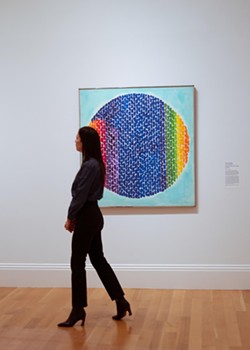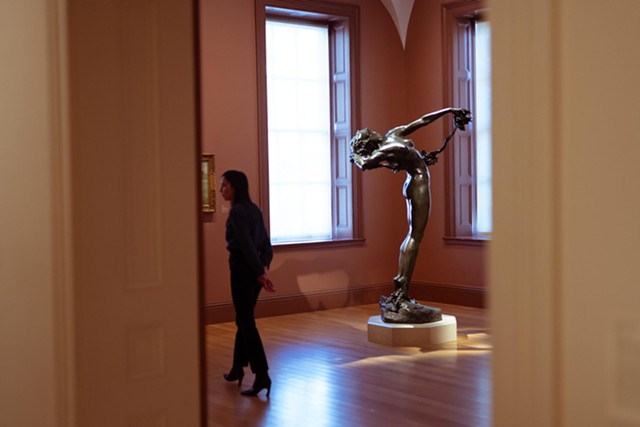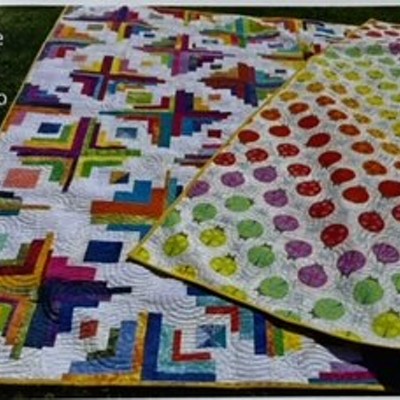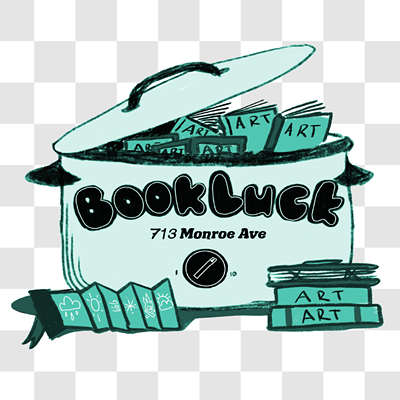[
{
"name": "500x250 Ad",
"insertPoint": "5",
"component": "15667920",
"parentWrapperClass": "",
"requiredCountToDisplay": "1"
}
]
Sarah Jesse’s first seminal experience with art happened when she visited the Detroit Institute of Arts as a teen and viewed the gargantuan installation of Diego Rivera’s 1932 Detroit Industry Murals.
“It was by far the most spectacular thing I had ever seen at that time in my life,” she said. “Given that my parents worked in the automotive industry, seeing the larger-than-life way that the industry was depicted instilled a sense of pride in me.”
Jesse, who at the end of February will become the eighth director of the Memorial Art Gallery, said that her work leading museums has been shaped by her working class upbringing in rural Michigan, and the role that access to the arts played in her life.
Those controversial Rivera murals were Jesse’s first signal about the power of pictures — that art could mean more than beauty — and the role of museums and galleries in presenting these sparks that could catch fire in the audiences.
“I wanted to work in a place that could have that kind of effect on other people,” she said. “Seeing the impact that museums have had on my life makes me want to make sure that museums are living up to their public-spirited missions, and in fact, serving everyone in their community, not just the traditional museum-goer.”
Jesse enrolled in the art history program at Oberlin College in Ohio, which enables students to rent art through a partnership with the Allen Memorial Art Museum on campus.
“That's how I came to live with a James Rosenquist and Robert Rauschenberg print in my room,” Jesse said. “It exposed me to this idea of what a museum could do for its constituents.”
She admits that’s a radical example of outreach, but the point is clear — there are tiers to arts access, and there’s a tendency to prioritize objects over our experience of them.
Jesse, now 43, has more than 20 years of experience leading and raising funds for American art museums, with roles at major institutions in big cities as well as smaller art houses in more rural areas.
She began her career immediately after graduate school at the University of Illinois, Chicago, first serving as assistant director of public programs at The Museum of Contemporary Art in the same city. Following that, she was part of the education department at the Philbrook Museum of Art in Tulsa, Oklahoma, the deputy director at the Los Angeles County Museum of Art (LACMA), and then interim director and CEO at the Orange County Museum of Art (OCMA). She comes to the MAG from her current role as the director of the Academy Art Museum in Easton, Maryland.
Jesse says she was drawn to the MAG in part for its relationship with the University of Rochester and the potential it offers. “I was attracted to the connection to the university because with that comes the infrastructure and all kinds of resources to do ambitious projects, and it also comes with access to young people at that critical age,” she said, adding that the MAG’s off-campus location, embedded in the city, is a strength. Jesse also says that modern museums need to be less passive about expanding engagement and access to more community members.
"The natural trajectory of the MAG, I think, is toward greater inclusivity, accessibility, and visitor-centeredness,” Jesse said. “That happens to align with my values and interests and expertise in the museum field. I'm interested in reaching people who don't fit that traditional profile, whether it's because of cultural capital, education, status, class — those are elements that I related to as a kid. And race and ethnicity are big factors that determine whether people feel welcome and comfortable in museums.”
Across the board, museums in the last decade have been focused on telling a fuller narrative of art history.
“But we've learned that you need to go one step further,” said Jesse. “If you build it, people won't necessarily come — you have to implement extra measures to make people feel really invited to come and to participate.”
Jesse’s predecessor at the Memorial Art Gallery is Jonathan Binstock, who in early 2023 became the director of The Phillips Collection in Washington, D.C. following a decade of leading the MAG. During his tenure, Binstock broke out of the white-walled box and connected with artists and audiences at alternative spaces, street art festivals, and brought early-career artists into the MAG through exhibitions and collections.
“He saw himself as a part of, not apart from, the community,” said Wall\Therapy founder and MAG board member Ian Wilson, adding that Binstock’s willingness to personally connect yielded programmatic success at the museum. He hopes the institution will continue to meet people on their level.
“Connecting with community organizations and organizers — the people who are interfacing with some of the most disenfranchised people in our city — would lead to another astronomical step forward in the MAG’s evolution as an institution,” said Wilson.
Jesse’s leadership history seems on par with these ideas. At LACMA, she was involved in an outreach effort that, as she put it, invested in connecting with people who were not already coming to ‘the mothership.’
“Taking a cue from my early experiences in museums, we thought through what the barriers were that prohibited people from coming,” she said. “How can we eliminate those barriers so that people can access the resources of the museum? And so we decided to go to people within the South Los Angeles community as opposed to asking them to come to us, and build relationships there within the neighborhood.”
The programs weren’t successful at first. LACMA commissioned a neighborhood study to learn what offerings were already in place in the area, and thought harder about how the museum could supplement them.
“We heard over and over from caregivers and parents that they wanted college and career readiness for their teens,” she said.
So the museum created a paid teen internship program, and also provided transportation that would pick up and drop off participants at their houses so they didn’t have to cross gang territories to attend.“
It was a good lesson for us in that sometimes you think you are removing the barriers to access,” Jesse said. “But there may be additional barriers and sometimes you need that intel to really understand the context within which you are working.”
Jesse is looking forward to learning about the MAG’s collection, Rochesterians, and the landscape of offerings that exist within the community and how the museum can play a larger role.
“Museums, when they are at their best, are vital institutions in their communities,” Jesse said. “But that is not by default. That is something that you have to intentionally work toward.”
Rebecca Rafferty is an arts writer for CITY. She can be reached at [email protected].
“It was by far the most spectacular thing I had ever seen at that time in my life,” she said. “Given that my parents worked in the automotive industry, seeing the larger-than-life way that the industry was depicted instilled a sense of pride in me.”
Jesse, who at the end of February will become the eighth director of the Memorial Art Gallery, said that her work leading museums has been shaped by her working class upbringing in rural Michigan, and the role that access to the arts played in her life.
Those controversial Rivera murals were Jesse’s first signal about the power of pictures — that art could mean more than beauty — and the role of museums and galleries in presenting these sparks that could catch fire in the audiences.
“I wanted to work in a place that could have that kind of effect on other people,” she said. “Seeing the impact that museums have had on my life makes me want to make sure that museums are living up to their public-spirited missions, and in fact, serving everyone in their community, not just the traditional museum-goer.”
Jesse enrolled in the art history program at Oberlin College in Ohio, which enables students to rent art through a partnership with the Allen Memorial Art Museum on campus.
“That's how I came to live with a James Rosenquist and Robert Rauschenberg print in my room,” Jesse said. “It exposed me to this idea of what a museum could do for its constituents.”
She admits that’s a radical example of outreach, but the point is clear — there are tiers to arts access, and there’s a tendency to prioritize objects over our experience of them.
Jesse, now 43, has more than 20 years of experience leading and raising funds for American art museums, with roles at major institutions in big cities as well as smaller art houses in more rural areas.
She began her career immediately after graduate school at the University of Illinois, Chicago, first serving as assistant director of public programs at The Museum of Contemporary Art in the same city. Following that, she was part of the education department at the Philbrook Museum of Art in Tulsa, Oklahoma, the deputy director at the Los Angeles County Museum of Art (LACMA), and then interim director and CEO at the Orange County Museum of Art (OCMA). She comes to the MAG from her current role as the director of the Academy Art Museum in Easton, Maryland.
Jesse says she was drawn to the MAG in part for its relationship with the University of Rochester and the potential it offers. “I was attracted to the connection to the university because with that comes the infrastructure and all kinds of resources to do ambitious projects, and it also comes with access to young people at that critical age,” she said, adding that the MAG’s off-campus location, embedded in the city, is a strength. Jesse also says that modern museums need to be less passive about expanding engagement and access to more community members.
"The natural trajectory of the MAG, I think, is toward greater inclusivity, accessibility, and visitor-centeredness,” Jesse said. “That happens to align with my values and interests and expertise in the museum field. I'm interested in reaching people who don't fit that traditional profile, whether it's because of cultural capital, education, status, class — those are elements that I related to as a kid. And race and ethnicity are big factors that determine whether people feel welcome and comfortable in museums.”
Across the board, museums in the last decade have been focused on telling a fuller narrative of art history.
“But we've learned that you need to go one step further,” said Jesse. “If you build it, people won't necessarily come — you have to implement extra measures to make people feel really invited to come and to participate.”
Jesse’s predecessor at the Memorial Art Gallery is Jonathan Binstock, who in early 2023 became the director of The Phillips Collection in Washington, D.C. following a decade of leading the MAG. During his tenure, Binstock broke out of the white-walled box and connected with artists and audiences at alternative spaces, street art festivals, and brought early-career artists into the MAG through exhibitions and collections.
“He saw himself as a part of, not apart from, the community,” said Wall\Therapy founder and MAG board member Ian Wilson, adding that Binstock’s willingness to personally connect yielded programmatic success at the museum. He hopes the institution will continue to meet people on their level.
“Connecting with community organizations and organizers — the people who are interfacing with some of the most disenfranchised people in our city — would lead to another astronomical step forward in the MAG’s evolution as an institution,” said Wilson.
Jesse’s leadership history seems on par with these ideas. At LACMA, she was involved in an outreach effort that, as she put it, invested in connecting with people who were not already coming to ‘the mothership.’
“Taking a cue from my early experiences in museums, we thought through what the barriers were that prohibited people from coming,” she said. “How can we eliminate those barriers so that people can access the resources of the museum? And so we decided to go to people within the South Los Angeles community as opposed to asking them to come to us, and build relationships there within the neighborhood.”
The programs weren’t successful at first. LACMA commissioned a neighborhood study to learn what offerings were already in place in the area, and thought harder about how the museum could supplement them.
“We heard over and over from caregivers and parents that they wanted college and career readiness for their teens,” she said.
So the museum created a paid teen internship program, and also provided transportation that would pick up and drop off participants at their houses so they didn’t have to cross gang territories to attend.“
It was a good lesson for us in that sometimes you think you are removing the barriers to access,” Jesse said. “But there may be additional barriers and sometimes you need that intel to really understand the context within which you are working.”
Jesse is looking forward to learning about the MAG’s collection, Rochesterians, and the landscape of offerings that exist within the community and how the museum can play a larger role.
“Museums, when they are at their best, are vital institutions in their communities,” Jesse said. “But that is not by default. That is something that you have to intentionally work toward.”
Rebecca Rafferty is an arts writer for CITY. She can be reached at [email protected].
Latest in Art
More by Rebecca Rafferty
-

Beyond folklore
Apr 4, 2024 -

Partnership perks: Public Provisions @ Flour City Bread
Feb 24, 2024 -

Partnership perks | Winter Swan Coffee + Stacy K Floral
Feb 9, 2024 - More »










